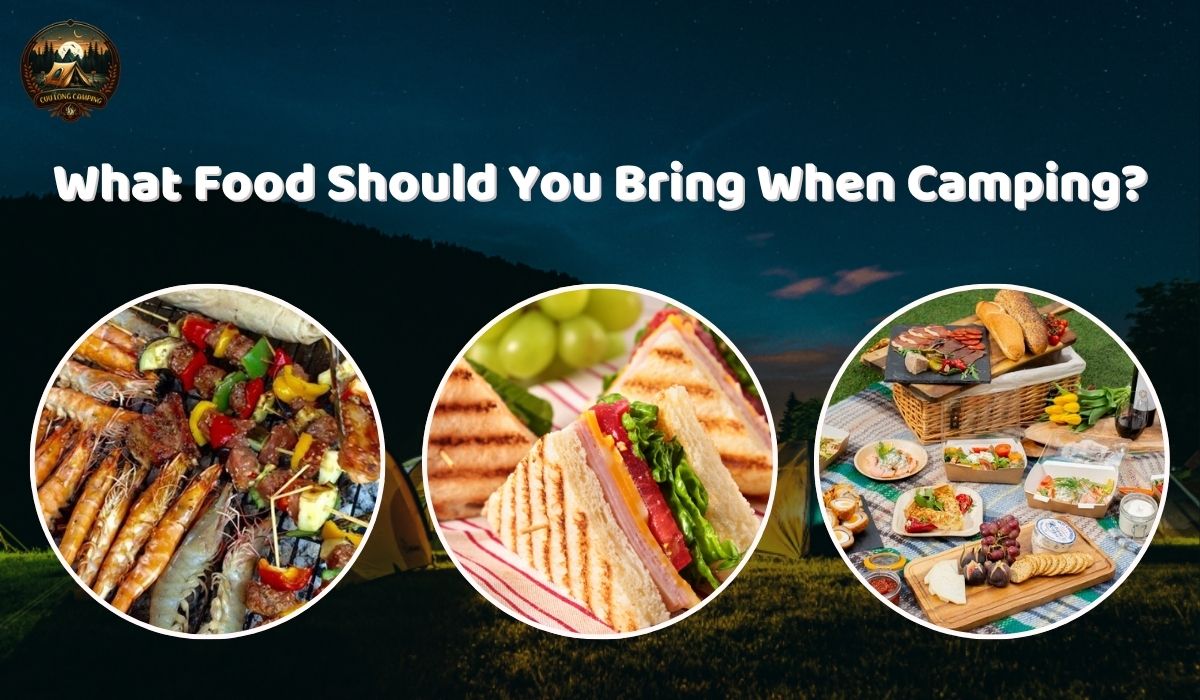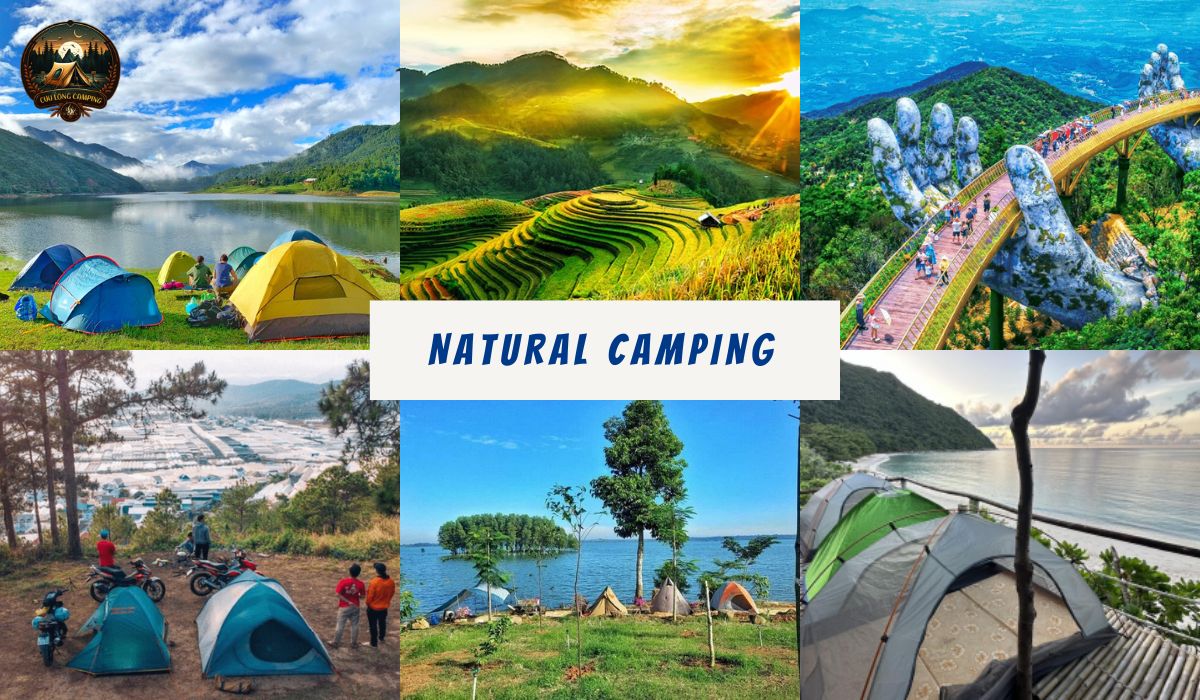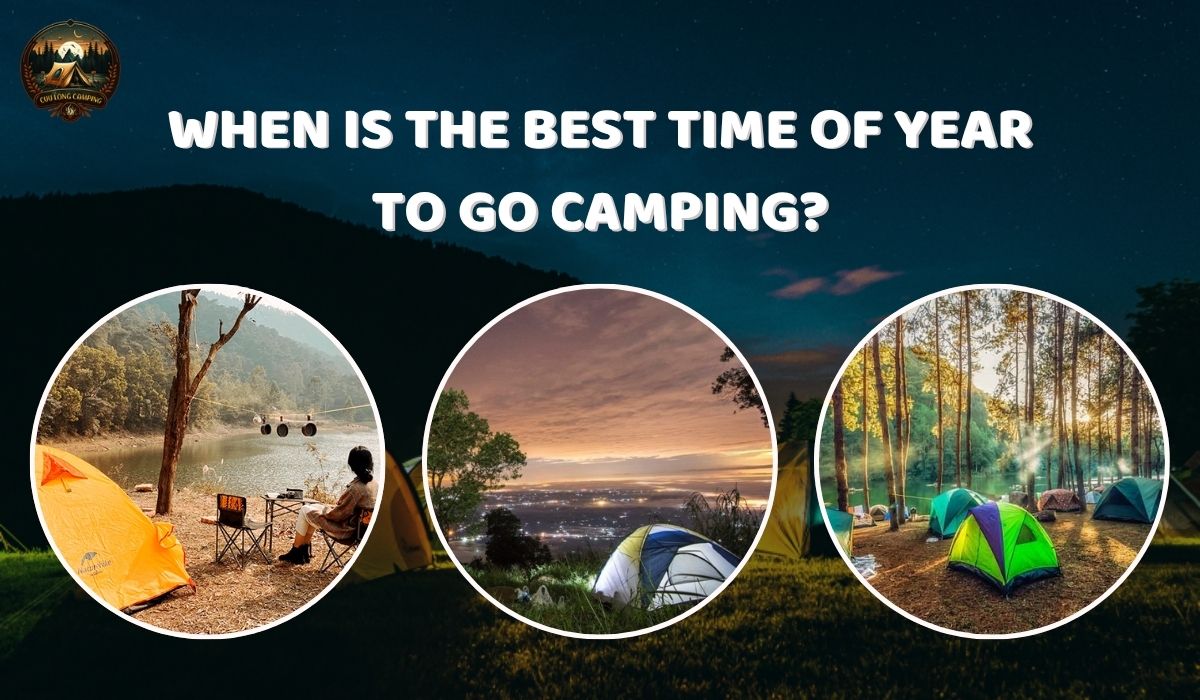What food should you bring when camping? Camping is an exciting activity, helping you relax and immerse yourself in nature. However, for a complete trip, preparing food is a crucial factor. So, what food should you bring when camping? Let’s explore the suggestions below with Cuu Long Camping today!
What Food Should You Bring When Camping?

Camping is an exciting activity that helps you relax and immerse yourself in nature. However, for a complete trip, preparing food is a crucial factor.
See more: Trekking Ta Lien Mountain: Conquering the “Fairy Forest” in the Heart of Northwest Vietnam.
So, what food should you bring when camping? Let’s explore the following suggestions:
1. Quick and Convenient Meals:
- Sandwiches: These are perfect for breakfast or lunch. You can combine various fillings like cold cuts, eggs, vegetables, etc., to create delicious and nutritious sandwiches.
- Rice rolls: Kimbap-style rice rolls, seafood rice rolls are both delicious and visually appealing. You can prepare them at home beforehand and bring them along to enjoy.
- Banh Mi (Vietnamese baguette sandwiches): Banh Mi with meat, pate, fried eggs, etc., are familiar and easy-to-make dishes.
- Instant noodles, instant porridge: Convenient, quick, and easy to prepare, suitable for when you want a fast meal.
- Fresh fruit: Provides vitamins and energy, helping you cool down.
- Snacks: Biscuits, chips, candies… to munch on throughout the trip.
2. Grilled Dishes:
- Grilled meat: Pork belly, chicken, ribs… marinated richly and grilled over hot coals will be very appealing.
- Grilled seafood: Fresh squid, shrimp, fish… grilled on a charcoal stove will be a wonderful experience.
- Grilled vegetables: Radishes, carrots, corn on the cob… grilled will be very sweet and fragrant.
3. Other Dishes:
- Salad: Helps you supplement vitamins and minerals.
- Soup, hotpot: Helps you warm up on cold days.
- Desserts: Fresh fruit, pastries, yogurt…
Notes when preparing food:
- Food preservation: Use airtight containers and insulated bags to preserve fresh food.
- Diverse dishes: Prepare various types of food to avoid boredom.
- Ensure food safety and hygiene: Wash your hands thoroughly before preparing food, and use clean utensils.
- Prepare enough drinking water: Filtered water is essential, especially in hot weather conditions.
Suggested menu for a camping trip:
- Breakfast: Sandwiches, fruit, yogurt.
- Lunch: Rice rolls, salad, snacks.
- Dinner: Grilled meat, grilled seafood, grilled vegetables, white rice.
Natural Camping Locations You Can’t Miss

Vietnam, with its diverse terrain and tropical monsoon climate, has created beautiful natural landscapes, making it an ideal place for camping trips. Here are some natural camping locations you can’t miss:
Northern Vietnam:
- Sa Pa: With lush terraced rice fields, unique ethnic villages, and a cool climate year-round, Sa Pa is one of the most ideal camping locations in Vietnam.
- Mu Cang Chai: Also a famous spot with stunning terraced rice fields, Mu Cang Chai will bring you unforgettable experiences.
- Quan Lan Beach: Located about 15km southeast of Co To Island, Quan Lan Beach with its white sand, clear blue water, and peaceful atmosphere is an ideal destination for sea lovers.
Central Vietnam:
- Ba Na Hills: With a cool climate year-round and majestic natural scenery, Ba Na Hills is an ideal destination for camping and exploration.
- Lak Lake: Located in the heart of the Truong Son mountain range, Lak Lake, with its pristine and poetic beauty, is an attractive destination for those who love exploration.
- Da Lat: The city of a thousand flowers with a cool climate year-round, Da Lat has many beautiful camping spots such as Tuyen Lam Lake, Cau Dat tea hill…
Southern Vietnam:
- Ba Den Mountain: Known as the “Roof of the Southern Region,” Ba Den Mountain with its cool climate and majestic scenery is an ideal place for camping and conquering.
- Tri An Lake: Tri An Lake, with its vast, airy space and picturesque natural scenery, is an ideal camping spot for those who want to enjoy the fresh air.
- Con Dao: With pristine beaches, clear blue water, and a diverse ecosystem, Con Dao is an attractive destination for those who love exploration.
Notes:
- Thorough preparation: Before going camping, you need to prepare all necessary items such as tents, sleeping bags, food, drinks, medicine…
- Environmental protection: Do not litter indiscriminately, do not destroy plants.
- Comply with local regulations: Each camping spot has different regulations; you should learn about them carefully before going.
When is the Best Time of Year to Go Camping?

Choosing the right time for a camping trip is a crucial factor determining the success of the entire journey. Each season of the year brings its own unique characteristics, affecting your camping experience. Here is detailed information about the advantages and disadvantages of each season, helping you make the most suitable decision:
1. Spring (March, April, May):
- Advantages:
- Beautiful nature: After a cold winter, nature begins to revive with blooming flowers and lush greenery.
- Pleasant weather: The climate is warm and pleasant, not too hot or too cold, very suitable for outdoor activities.
- Fewer crowds: Compared to other seasons, spring usually has fewer tourists, giving you more private space to enjoy nature.
- Disadvantages:
- Unpredictable weather: Showers can still occur, affecting camping plans.
- Some insects start to appear: You need to prepare various insect repellents.
2. Summer (June, July, August):
- Advantages:
- Long daylight hours: You have more time to explore and enjoy outdoor activities.
- Many fun activities: Many tourist areas organize attractive recreational activities.
- Disadvantages:
- Hot weather: High temperatures can be uncomfortable, especially when engaging in outdoor activities for long periods.
- Rainy season/storms: The rainy season often begins from late July; you need to monitor the weather forecast carefully.
- Crowded: Summer is peak tourist season, and camping spots are often crowded.
3. Autumn (September, October, November):
- Advantages:
- Cool, pleasant weather: The climate is cool and the air is fresh, very suitable for outdoor activities.
- Stunning natural scenery: Leaves change color to yellow and red, creating a romantic landscape.
- Less rain: Stable weather, fewer storms.
- Disadvantages:
- Shorter days, longer nights: Daylight hours are shorter, giving you less time for outdoor activities.
4. Winter (December, January, February):
- Advantages:
- Fresh air: The air is fresh and cool, very good for health.
- Fewer crowds: Tourist destinations are usually less crowded, giving you more private space.
- Disadvantages:
- Cold weather: Low temperatures can be uncomfortable; you need to prepare enough warm clothes.
- Some places may be closed: Some tourist areas may close in winter.
We are a group of young people in the Mekong Delta who are passionate about travel, with the dream of discovering many beautiful places to develop sustainable and environmentally friendly tourism. Follow Cuu Long Camping to explore all the beautiful scenery of the Mekong Delta and many new lands on our trips here!





